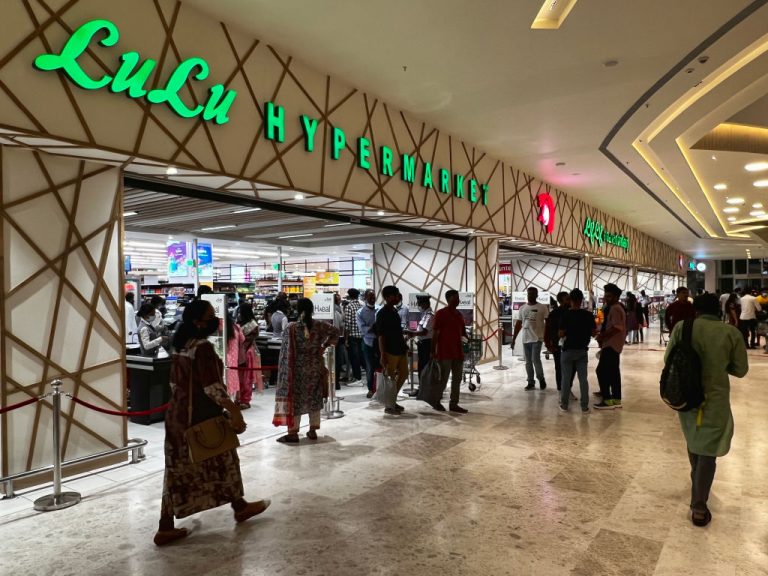
Australia’s supermarket sector could be on the brink of a significant transformation, as Prime Minister Anthony Albanese extends an official invitation to a major foreign retailer. During his visit to the United Arab Emirates, Mr. Albanese encouraged M. A. Yusuff Ali, the billionaire chairman of LuLu Group, to introduce one of the Middle East’s leading supermarkets to Australia, aiming to boost competition in the market.
While touring a LuLu Hypermarket in Abu Dhabi, Mr. Albanese confirmed his proposal to Mr. Ali, stating, “I’ve encouraged him to come to Australia. We need more competition in the Australian supermarket sector.” LuLu Group, which operates over 250 stores across the Middle East and Asia, is renowned for its vast Hypermarket megastores, which are significantly larger than typical Australian supermarkets.
LuLu Hypermarket: A Retail Giant
LuLu Hypermarkets, with an average size of 9,200 square meters, are nearly three times the size of major Australian supermarkets like Woolworths and Coles, which typically range from 2,500 to 3,500 square meters. These megastores offer a wide array of products, including groceries, household items, and lifestyle goods, sourced from 85 countries worldwide. The company also manages several shopping centers across the Middle East and India.
The potential entry of LuLu Group into Australia could disrupt the country’s $148 billion supermarket sector. According to an Australian Competition and Consumer Commission (ACCC) inquiry earlier this year, the market is “highly concentrated,” with Woolworths and Coles controlling two-thirds of national grocery sales. German retailer Aldi holds a 9% share, while Metcash, through IGA and Foodland, commands 7%.
Challenges in the Australian Market
Despite the potential for disruption, LuLu Group may face significant challenges in establishing a presence in Australia. The ACCC report highlights “significant barriers to entry and expansion at scale,” including the scarcity of suitable retail sites. Woolworths and Coles collectively hold over 150 undeveloped sites, posing a formidable obstacle for new entrants.
Retail expert Professor Gary Mortimer from Queensland University of Technology expressed skepticism about LuLu Hypermarket’s prospects in Australia. “There’s clearly some significant challenges, and number one is location and space,” he said. “Their Hypermarkets are large format businesses. There isn’t available real estate for those types of developments, and presently most suburbs would already be underpinned by at least one supermarket, if not two or three.”
“Achieving large-scale new entry is not likely in the short to medium-term, as demonstrated by the time taken (more than 20 years) for Aldi to achieve its current market position.”
Comparative Market Analysis
Professor Mortimer also noted the differences in business models between LuLu Hypermarket and other international retailers like Aldi and Costco, which have successfully entered the Australian market. “Aldi was able to grow quickly because they’re a smaller format business and they don’t require a lot of infrastructure,” he explained. “Costco has done incredibly well, but it’s very slow growth and their growth is somewhat exposed to available land and space.”
The concept of hypermarkets in Australia is not new. In January 2020, German retailer Kaufland abandoned plans to establish a presence after securing sites for two dozen stores and developing a distribution center. The company cited a focus on European operations, but industry sources indicated that the need for large sites and the desire to own rather than lease real estate were significant factors in its withdrawal.
Future Prospects and Considerations
The smaller size of Australia’s supermarket sector, compared to other major markets, may deter large multinational companies from entering. Professor Mortimer suggested that Mr. Albanese’s invitation to LuLu Hypermarket might be more of a diplomatic gesture than a concrete plan. “When you take into consideration the challenges of available real estate and the population density challenges we face and the fact that we’re already a relatively over-serviced population when it comes to food and groceries, I don’t see how a business like LuLu would successfully enter and be viable,” he concluded.
As Australia’s supermarket landscape continues to evolve, the potential entry of LuLu Hypermarket remains speculative. However, the conversation underscores the ongoing need for increased competition and innovation in the sector. Whether LuLu Group will ultimately take up the challenge and reshape the Australian market is yet to be seen.






